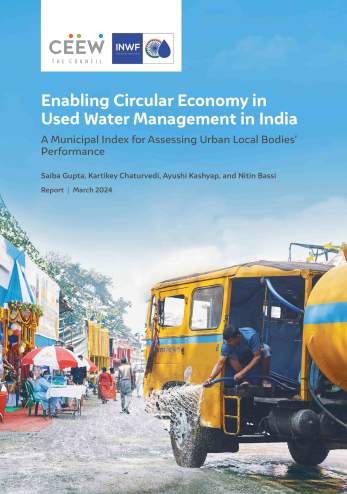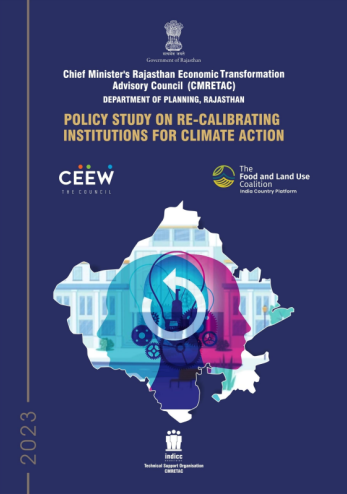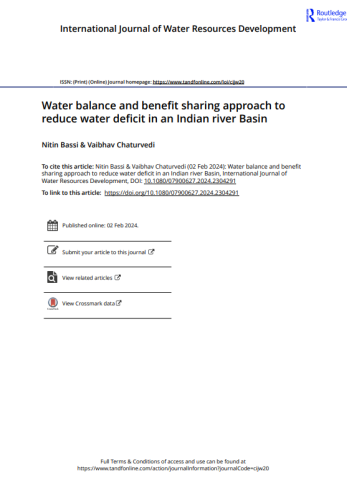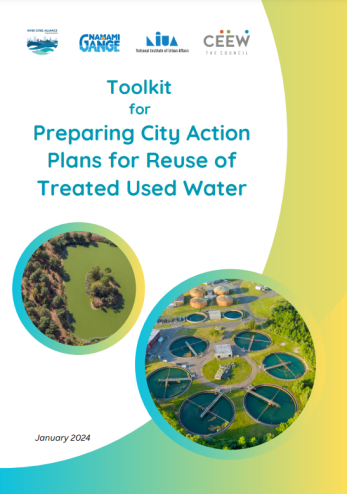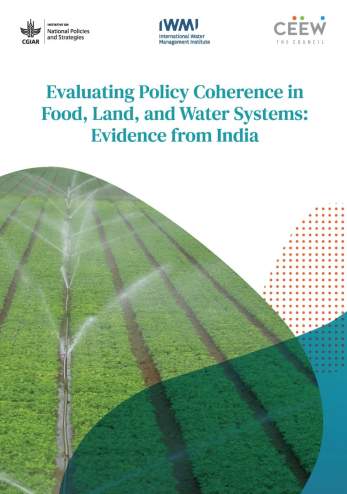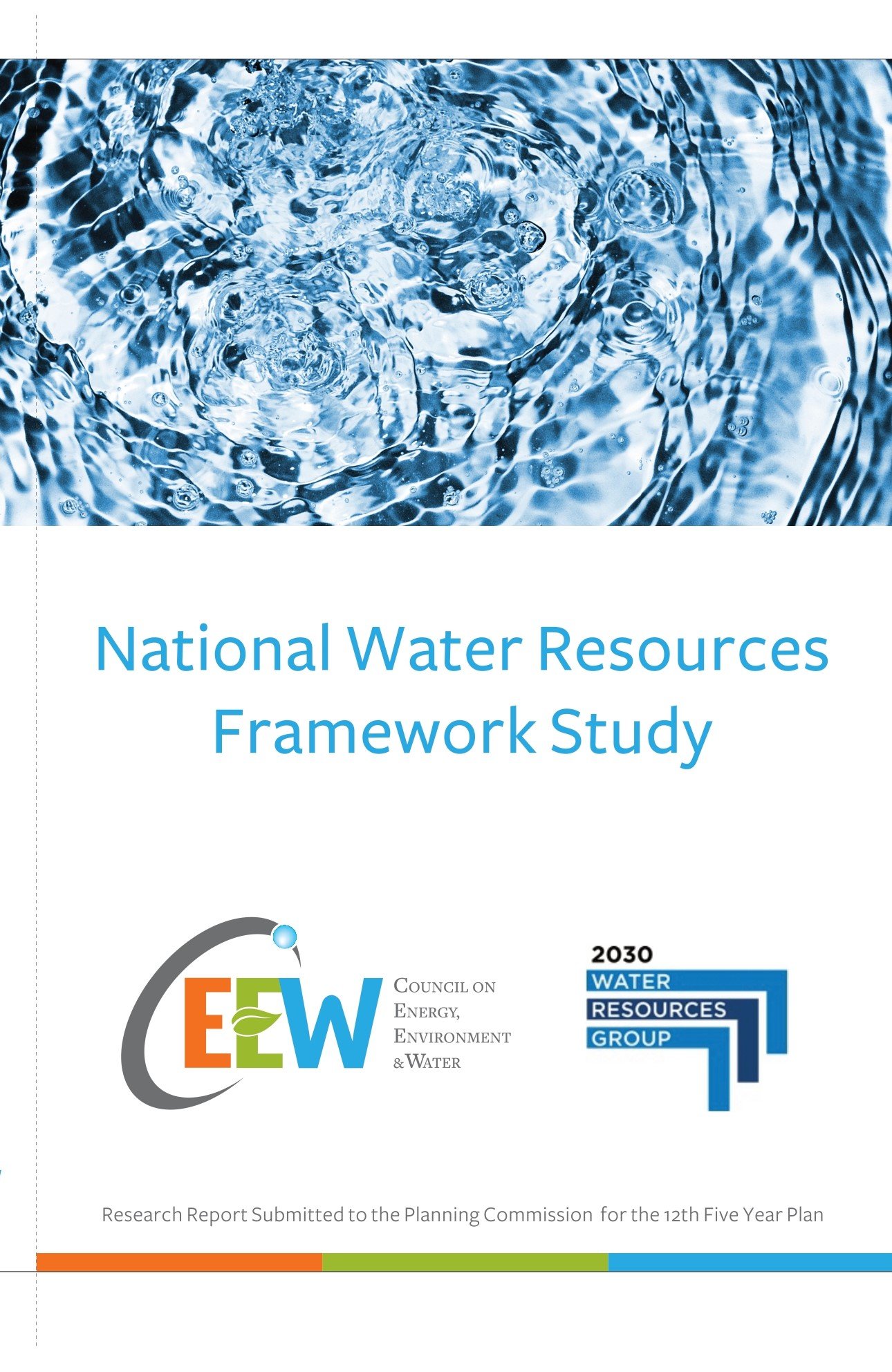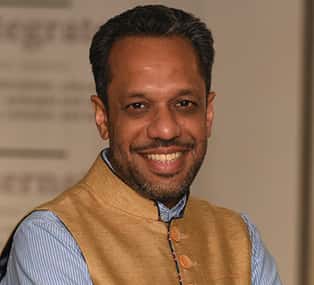Water Resources Management
- Water resources management to be state-focussed incorporating river basin management principles and practices.
- State governments to commit to the need for water resources management, and the need to separate water resources management from (mainly irrigation) water delivery.
- State governments to establish a State Water Council with responsibility for consultation and formation of water policy, supported by an adequately resourced professional water resources management department (WRD).
- Water resources planning and management to be more participatory, with participation by non-governmental organisations and individuals in the State Water Council and on River Basin Councils (RBCs).
- RBCs to be formed in sub-basins and river catchments, with responsibility of preparing River Basin Plans, liaising and partnering with the WRD and RBCs in neighbouring states.
- State governments to prepare and enact new water resource planning and management legislation (Water Resources Act) to support the institutional structures required for a modern framework for water resources management.
- Provision of adequate financial resources to establish a professional Water Resources Department, with funds for staffing, equipment and materials and, in the initial years, significant training and capacity building.
- Provision of adequate financial resources to restructure the Irrigation Department to form the Irrigation Services Department focussed on sustainable management, operation and maintenance and performance enhancement of existing irrigation systems.
Role of the Water Regulator in WRM
- Establish State Water Councils responsible for setting the water policy within each state and agreeing on future development options, proposals and projects.
- Create Water Resources Departments in each state, separate from the Irrigation (Services) Department, as the executive body of the State Water Councils.
- Create (sub) RBCs to enable local stakeholders to participate in the preparation and implementation of comprehensive River Basin Plans.
- Enact state Water Resources Acts to create the above bodies and define their functions and structure.
- Update Irrigation Acts in each state to restructure the Irrigation Departments as service providers to water users, in particular to WUAs.
- Update the WUA Acts in each state to facilitate irrigation management transfer and give WUAs more autonomy and more responsibilities, including the right to prepare their own charter, and the right to set, collect and utilise service fees to cover MOM costs.
Perspectives on Legal Frameworks for Water Resources Management
- India needs a national water resources law. Moreover the States too need to adopt water resource management legislation.
- There is a strong argument in favour of including groundwater within the scope of a national water resources law.
- A national water resources law would in turn require national institutions, including a national water commission as well as a high level council not only to undertake a coordinating function but also to make the hard decisions that are invariably a feature of water resource management.
Developing a Water Conservation Strategy for Industry
- The essence of a strategy for achieving a water conservation strategy in industry is a partnership between Government and industry; a partnership which will be formal and meaningful by setting targets and undertaking performance benchmarking with major industrial sectors.
Working with the various industry associations and Confederation of Indian Industry, national and state Governments need to work with industry to develop a forum which will:
- Provide information on industry specific good practice in wise water use.
- Undertake to develop expertise in water audits and water use advisory services.
- Provide details of ‘exemplar’ case studies that are relevant to the different industrial sectors operating in India.
- Provide a gateway for accessing information about water saving and water efficiency technologies in rain-water harvesting, recycling and reuse, water conserving devices and support to help behaviour change.
Urban Water Supply Reform and Use of Private Public Partnerships
- Provide incentives through performance monitoring benchmarking for water utilities to develop business planning in order to ensure more effective water utility management for the planning of operations, investments and finance in a sustainable and affordable way.
- Municipalities and states need to embrace other approaches to improving water services. These approaches are characterised by decentralisation away from central state government and by greater autonomy. They include community water associations, town Water Boards, and possibly small-scale private water companies.
- Adopt a greater degree of end user consultation rather than standardised approaches that do not meet their needs.
- The reforms under JNNURM, for ring fencing of water utilities needs to be strengthened to include ‘corporatisation’.
Regulation of Water Supply and Wastewater
- Accelerate and consolidate the water utility performance monitoring scheme roll out so that each State achieves benchmarking all cities and towns say by the year 2015.
- Review the current performance indicators of the benchmarking network to include process benchmarking activities and to promote the business-like planning approach to be adopted by water utilities.
- Strengthen the State SLB Coordination Cells into full-fledged Performance Monitoring Units to function within the respective Urban Development Departments or Directorates for monitoring the service standards and developing information database on all aspects of service and economic regulation.
- Introduce periodical rating of cities and institute awards for best performing cities in the league especially in the area of sanitation.
- Increase the delegated management through appropriate form of PPPs so that contractual regulation is ensured by way of ULBs committing to some fixed tariff adjustments linked to natural inflation.
Governing the Entrepreneurial Sector Providing Water Services
- The water supply sector reform process needs to embrace the opportunities and services that entrepreneurs could bring to improving water and sanitation services to people living in urban and rural areas.
- Sound principles of regulation need to be adopted to ensure that there is no abuse of customers in the delivery of services, which will often be provided on a monopoly basis.
- Entrepreneurship needs to be adopted in the wider context of services that could be more effectively provided by NGOs or private sector and working in partnership with public authorities.
- Once the government has accepted the concept of private sector involvement in water services, particularly its national private sector, it should encourage its replicability through legislation and by establishing an appropriate system of regulation.
National Water Commission
The National Water Commission would operate as:
- An independent technical assessor to offer more refined analysis to support the Planning Commission and the Ministry of Environment and Forests before project clearances are issued, to monitor progress during construction and timely completion of projects, and to continuously assess the management of projects after completion.
- The guardian or watchdog of national water resources, states' rights and individual entitlements, a promoter of the Government‘s principles for water sector reform, and an independent monitor for the implementation of a long-term National Water Strategy.
- An aggregator and public communicator of data and information, so that water authorities at the central and state levels have an objective basis for discussing the state of the country's water resources and to organise and implement a nationwide and continuous water and wastewater performance benchmarking programme for irrigation, rural and urban drinking water management, including setting service standards for ensuring resource and financial sustainability.
- A facilitator and capacity developer in order to support states (if requested) with advice on institutional design, capacity and skills development in various departments, and to offer technical advice and inputs, if sought, to institutions authorised to regulate, arbitrate and/or resolve disputes.
The National Water Resources Framework Study was prepared along with a roadmap for reforms to serve as an input into the deliberations for the 12th Five Year Plan.






